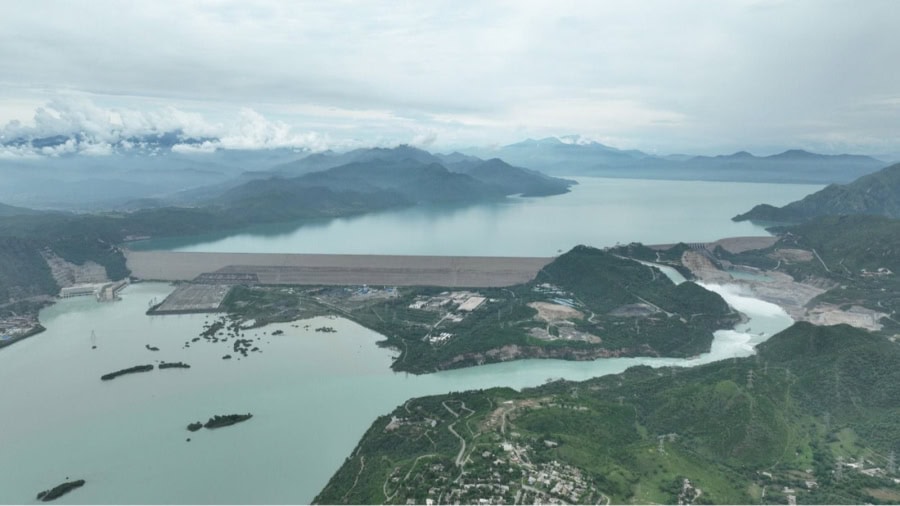LAHORE – The year 2024 marks a momentous occasion for the development of water and hydropower resources in Pakistan, as the iconic Tarbela Dam turns 50 this year.
After the completion of the civil works of Tarbela Dam by WAPDA in the third quarter of 1974, the filling of water in the reservoir commenced 50 years ago.
Tarbela Dam stands as a symbol of national pride over the last five decades. Tarbela is the capstone of the Indus Basin Plan to ensure the continued and improved supply of water to millions of acres of irrigated land in Pakistan, mitigate floods and generate green, clean and affordable hydro electricity to move the wheel of the national economy.
The contribution the Tarbela Dam Project has made towards progress in the country can be judged from the fact that it has released 406 million acre-feet (MAF) of stored water from the reservoir for agriculture and contributed 590,361 million units of low-cost and environment-friendly hydel electricity to the National Grid.
It is important to note that the economic and financial benefits of one MAF of water in Pakistan are estimated at $1,000 million ($1 billion). Therefore, total benefits accrued from Tarbela Dam during the last 50 years stand at $406 billion.
Tarbela Dam, the largest earth and rock-fill dam in the world at the time of its completion, is located across the River Indus 64 Km northwest of Islamabad. The construction work on Tarbela Dam commenced in 1968, while all the civil works were completed in 1974. Development of powerhouses commenced in phases starting from 1974 onwards.
Tarbela Dam Project consists of a 9,000-foot (2,743 meters) long and 470-foot (143 meters) high embankment across the entire width of the river. It has two spillways with a cumulative discharge capacity of 1,500,000 cusecs (42,476 cumecs).
Two auxiliary embankment dams close the low-level ridges in the left bank valley. A group of 4 tunnels, each 0.8 Km long through the right abutment, were constructed for irrigation releases and power generation.
Tarbela reservoir which spans over an area of 259 square Km, had initially a live storage of 9.68 MAF. However, it has reduced to 5.77 MAF due to the natural phenomenon of sedimentation during the last 50 years.
A power station on the right bank near the toe of the main dam houses 17 power units at Tunnels 1, 2,3 and 4. Tarbela is the biggest electricity generation facility in Pakistan with an installed capacity of 4888 MW – 51.6 % of the total hydel capacity of WAPDA.
The installed capacity at Tarbela will further increase to 6418 MW after completion of the under-construction Tarbela 5th Extension Hydropower Project.
Cost of Tarbela Dam Project including power units 1 to 14 amounts to $2,630 million. The cost of the Tarbela 4th Extension Hydropower Project with power units 15 to 17 stands at $1,075 million, while that of the under-construction Tarbela 5th Extension, with power units 18 to 20, is estimated at $807 million.










